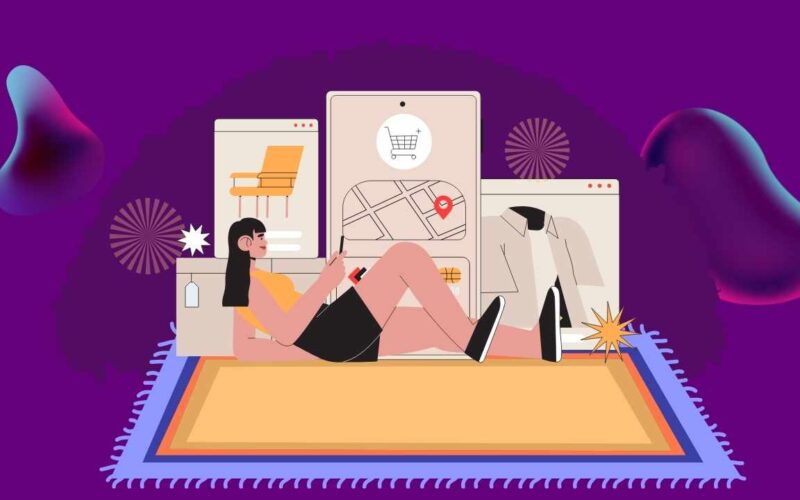Technological advancements continue to disrupt markets and economies in 2022. An emerging trend over the last few years is the gamification of apps in the education, commerce, and social verticals. The app gamification market is estimated to be $30 Billion in size by 2025. An overlapping category, often confused with gamification of apps, i.e., fantasy sports apps is estimated to cross $48.6 Billion by 2027.
Gamification of apps helps you in optimizing your apps KPIs like retention rates, churn rates, DAUs, MAUs, Avg user session length, Stickiness (DAU/MAU), CPA, LTV, etcetera.
And so, the gamification trend is catching up like a wildfire across sectors, esp in the banking and finance industry. Gamification of apps is helping the finance sector in breaking entry barriers for new-age investors and keeping them hooked to their apps while educating them about the nuances of the stock market, trading, and investments. I can hear your mind screaming-
“But what’s the gamification of apps?”
“How is gamification helping the finance sector?”
“Do we need to gamify our stock trading apps?”
“How to build gamified stock trading apps?”
“Wait, is gamified stock trading apps the same as fantasy stock trading apps?”
“How to gamify our existing investment apps/websites?”
“What is the tech stack to build a stock trading app with gamification strategy?”
“how much is it going to cost to build a gamified stock trading or investment app?”
“Is gamification of investment apps legal?”
“Could you give a few examples of existing gamified investment apps?”
Well, stay calm. I’m gonna address each one of these in detail, one at a time.
What’s the gamification of apps?
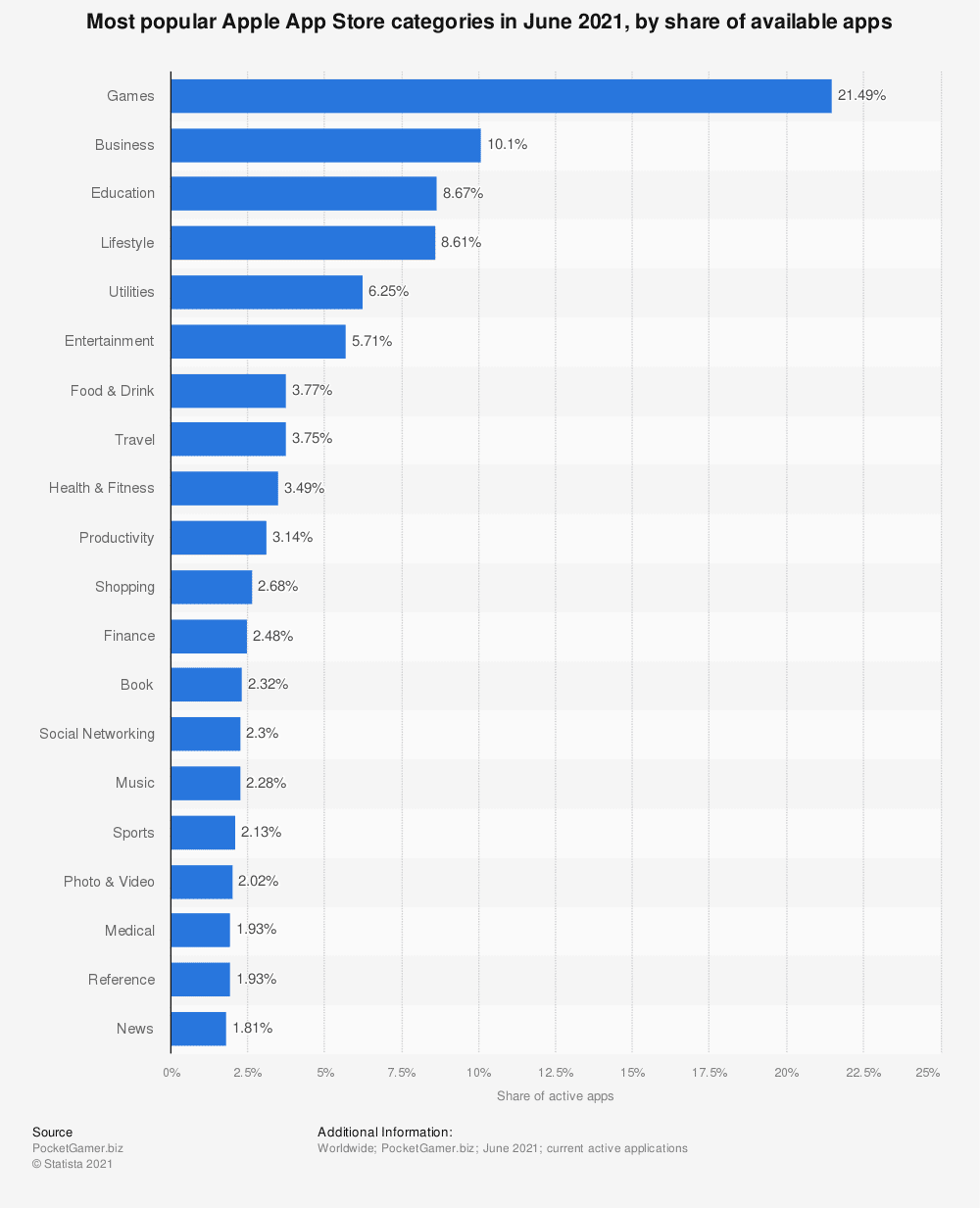
As you can see in the image, games are the most popular apps. People of all ages, gender, and ethnicity play games (not everyone, but most). The question is what makes them the most popular, what’s so addictive about games?
Going by human psychology, it’s the competition, the fun and the thrill of participating, and most importantly the sense of achievement when you score, break records, or win the game. What mobile app games are successfully hacking is the user’s neurotransmitter hormone dopamine! It’s high when you play/win games, and as soon the dopamine level drops, you crave to start playing again. This is the major driving factor behind games being so popular.
Put your hands together for the grand entry of “gamification of mobile apps”…
Taking a cue from the success of game apps, marketers and innovators, like yourself, thought why not bring the game elements to otherwise boring travel, finance, commerce, education, news, sports, social, and other apps?
And this process of implementing game attributes like social competition, rewards, badges, levels, etcetera to your app and keeping your users glued to your apps is what’s called gamification of mobile apps.
For example, you can build in your app a feature to reward users for daily logins in terms of Karma points. This could be negative Karma as well in case users don’t open the app in a 24-hour span.
A recent real-life app gamification example could be that of Goibibo’s IPL (Indian premier league) themed app gamification. They organized goCashFest for MI (Mumbai Indians) fans, where they allowed users to earn goCash for every wicket, boundary, player & team achievement in terms of the 50s, 100s, wins. FYI, Goibibo is a travel ticket booking application, and IPL is the most popular T-20 Cricket tournament.
Similarly, Byju’s (edTech), Fitocracy (HealthTech), Duolingo (edTech), Robinhood (FinTech), Starbucks (FoodTech), MySugr (HealthTech), Habitica (Productivity), Khan Academy (edTech), Rainmaker(FinTech), and so many others have implemented or introduced gamification features in their respective apps to boost engagement and overcome retention challenges.
Is gamification of apps the same as fantasy gaming apps?
Technically, No. Fantasy gaming apps strictly fall under the games category. And gamification of apps, as explained, is adding gaming characteristics to your apps.
But in the stock trading space, gamifying your stock trading application would technically be the same as building a fantasy stock trading application. The process is almost the same with slight differences.
Strategies to gamify investment apps
By now, you must be wondering, how to implement these game attributes in stock trading or finance apps? What are all game features or elements we can add to gamify our apps?
A short list of features to gamify your stock trading and investment app could be:
– real cash reward, virtual points convertible to cash,
– closed social group challenges to build a portfolio with high return rates or predict individual stocks
– open portfolio challenge for everyone with daily real cash winners or group of winners. This could also be virtual points that are convertible to real withdrawable money.
– hourly, daily, weekly, monthly AI-led recognitions
– performance badges, and unlock new levels of competitions
– social interaction/engagement between users (team formation, chats, virtual cash transfers)
– scoreboards/leaderboards
– fun quizzes
– animated user avatars
– team on team challenges
– Social media sharing, invites, discussions
There can be more features to build the gamification quotient of your financial app. But the exact strategy for the gamification of your investment app idea would totally depend on your vision for the app, the target market, target user base, and of course the budget.
Why gamify stock trading apps? Is it necessary?
Let’s reframe the question to “why gamify any app?”. Here’s the answer-
The average user’s attention span is around 6-8 seconds. Being a user, you would know that this too seems to be an inflated number as 3-5 seconds is the actual attention span of mobile users in the smartphone era.
As soon as you wake up, you start receiving notifications on your mobile. From bank balance notifications to personal WhatsApp/Skype messages and push notifications of what our friends posted last night on Instagram and Twitter, to promotional cab & food booking offers and of course the spammy marketing emails.
Businesses across the world are vying for our attention, and the competition is fierce. Startups these days seem much like a 2012 Facebook post, “solving XYZ problem with 72 others”. It’s indeed tough to differentiate your app from the rest in the information age as everyone has access to the same piece of information.
Technology is no longer a differentiator.
Design, innovation, execution, and monopoly are the true winners.
And gamification of apps is the fusion of design, innovation, and execution. Add to these ones or more inhouse AI/ML algorithmic muscles and you are all set to win the battle, at least in the fintech domain.
By the way, AI/ML algorithms can be patented as well, but there are some tight regulations around what can be patented and whatnot.
So,
– gamification is important to boost user retention, loyalty, and your app’s engagement quotient (KPIs, as mentioned in the first part of this insight), and
– fantasy trading & investment apps helps novice and beginner lever investors and traders to learn the building blocks of financial markets while capping their exposure & losses
In short, gamification is important to differentiate your app, your startup/company/organization from your 72 competitors.
Architecture for building gamified scalable fantasy stock trading app in the cloud using AWS
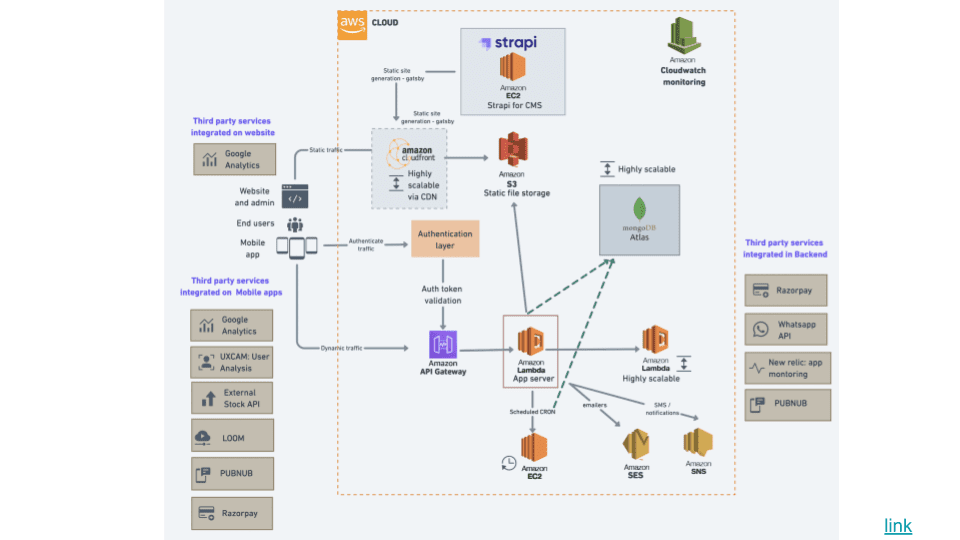
Investment gamification promises great business value and potential, but all of it is of no use if it is not implemented properly in a scalable, secure, and cost-effective way.
So, here is the tech stack behind a recently developed gamified fantasy stock trading app which we developed for one of our customers with all the advanced features of a fantasy sports app that could be incorporated in an investing/trading application.
A 3-tier MERN stack architecture for developing fantasy stock trading web/mobile applications
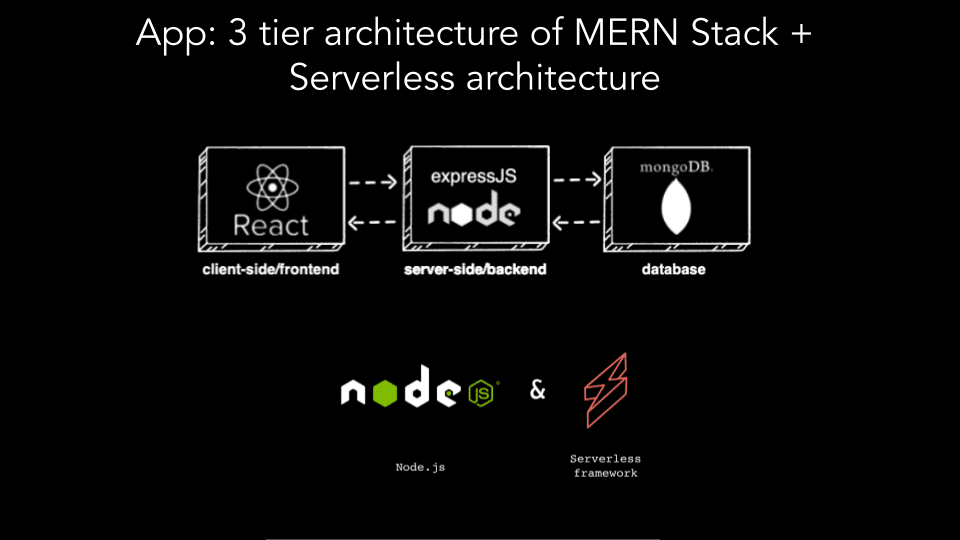
Express & NodeJs for server-side app architecture, or you may call it our backend technology stack in the AWS cloud for the fantasy investment app development.
ReactJs as the web frontend stack for the fantasy stock trading application. The UI part is developed using this frontend web and mobile framework. UI example could be the dashboard screen of your fantasy stock investment app to see your current portfolio or a watchlist.
MongoDB, an open-source database technology, is the database for the fantasy stock trading and investment app. This is used to store the user information and activity, as well as portfolio-related critical data.
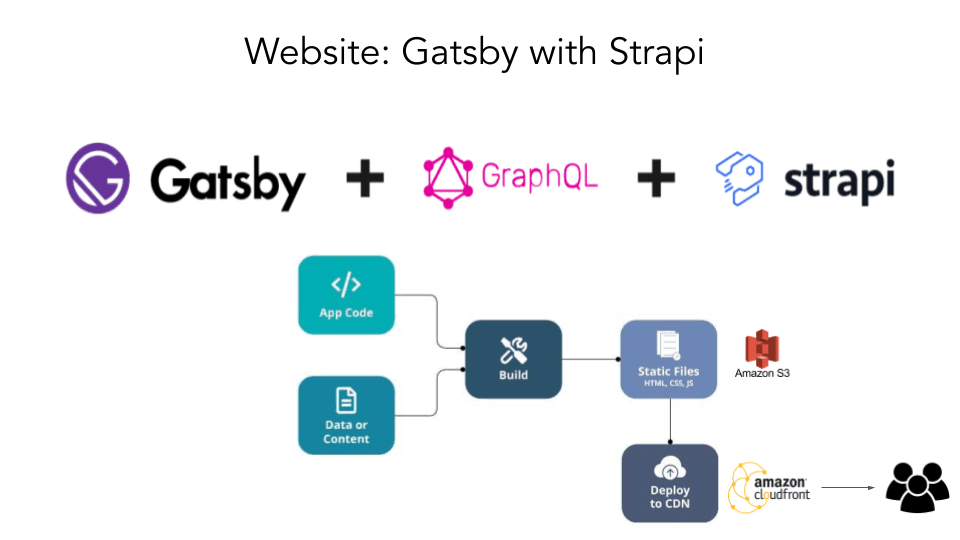
The website frontend was built using Gatsby, Strapi, and GraphQL.
Gatsby is an open-source framework for headless CMSs to build ultra-fast, high-performing websites. Strapi is the headless CMS that we used for Gatsby. We hosted Strapi in the AWS EC2 (as can be seen in the architecture image). GraphQL is the API-led query language and runtime for modern data-powered applications.
The static sites generated by Gatsby are stored in AWS S3 and served via AWS CloudFront (which is a highly scalable CDN service from Amazon Web Services).
For email notifications, we used Amazon SES, and for SMS notifications we used AWS SNS service.
We also used several third-party services like PubNub (using which you can add in-app chat and location-based features), New Relic (you can use this for app performance monitoring), Whatsapp API (use this for social sharing/invite features), and Razorpay (used for in-app transactions in the stock trading app). Some other 3rd party integrations included Google Analytics, UXCAM, LOOM, and most importantly the External stock API.
AWS stack for fantasy investment app development included AWS EC2, Amazon Cloudwatch, Amazon Cloudfront, Amazon S3, Amazon API Gateway, Amazon Lambda App Server, Amazon SES, Amazon SNS, Amazon IAM, Amazon Route 53, and AWS Billing (obviously!).
Read AWS best security practices.
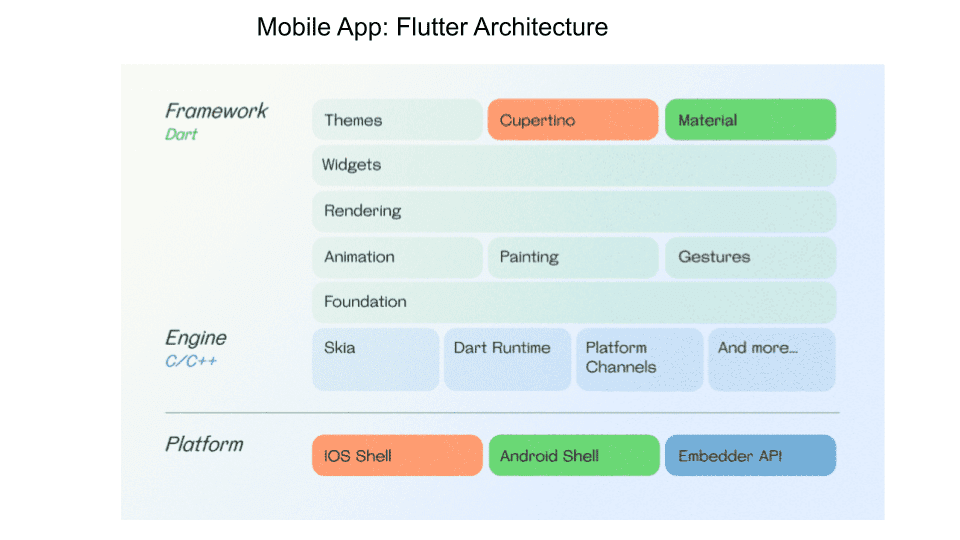
Note: We used Flutter to build the fantasy stock investment app’s mobile app.
Real-time financial data streaming to the fantasy trading app using stock API and WebSockets:
Previously, tight regulations around financial markets across the world made it difficult for small organizations to fetch the stock data in real-time from the exchanges. It used to be a cost-intensive affair as you were supposed to own hardware and co-locate to your stock data provider’s data centers. But lately, over the last 2 decades, technology adoption and cloud infrastructure have helped startups and financial apps to access real-time stock data streams, often using pub/sub messaging patterns (middlewares). And Websockets is an efficient messaging mechanism to get this real-time stock data from cloud servers.
Why use WebSockets?
Stock trading is a real-time affair, a latency of a few hundred milliseconds can result in disaster. So, electronic trading apps should normally be built with a high tolerance for latency, throughput, and Jitter.
Messaging and connection protocols like HTTP/HTTPS are alone not sufficient (or let’s say efficient) for this use-case. Be it request-response, short polling, long polling, or server-sent events, HTTP/HTTPS-based messaging/connection protocols are good for one-way communication. For persistent communication, we need WebSocket protocols (TCP).
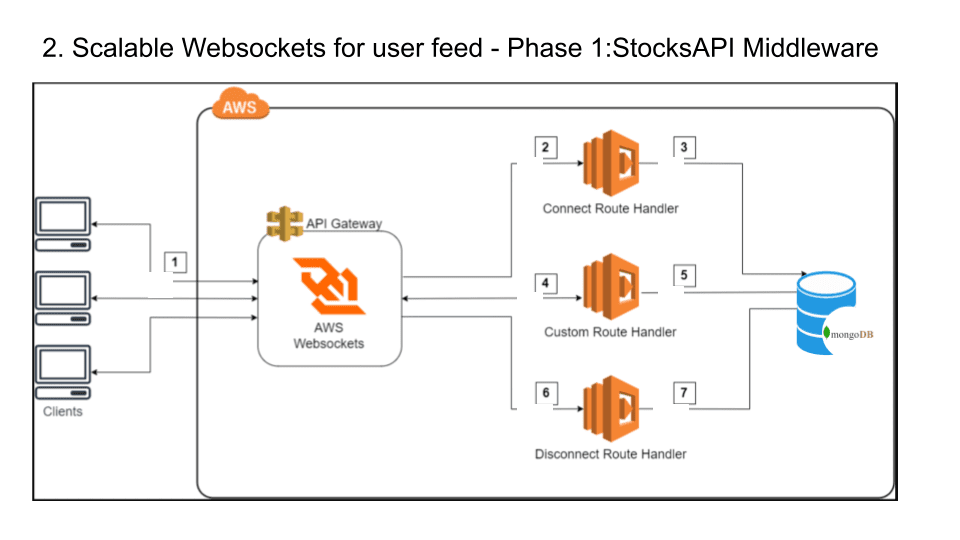
Websockets, unlike HTTP, are full-duplex i.e., two-way messaging protocol, and operate with lower overloads than HTTP protocols. Thus it is much faster and suited for real-time data streams.
Ideally, to get real-time stock data streams using third-party APIs, Websocket protocol first makes an initial Handshake request i.e., an HTTP request from the client to server to open a WebSocket connection. If the server supports WebSockets, it will respond with 101 and establish a TCP/IP-based web connection for two-way messaging between client and server.
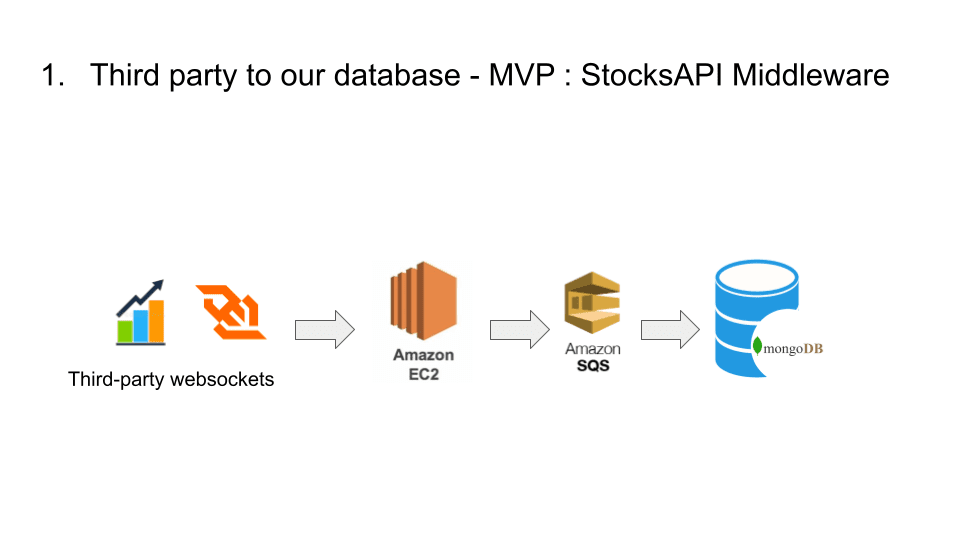
The third-party stock API server that we used to fetch stock data in real-time does support Websockets. And so, using Websockets, Amazon API Gateway, and Amazon SQS ( fully managed message queues for microservices and serverless apps), we developed a high-performing scalable infrastructure for real-time stock data transmissions in a cost-effective way.
For more details on the technological implementations, contact our tech consultants.
How much does it cost to build gamified stock trading apps?
We have done a detailed insight on what it costs to develop an iOS or Android mobile app. To get a rough estimate of how much it would cost you to build/develop a gamified stock trading app, please use our app costs calculator. Or the best, get in touch with Codewave’s digital solutions consultants.
Ready for launching your own fantasy trading applications?
The upsurge of gamified apps will continue in 2022, the market is huge given that only a percentage of people in developing nations have access to educational, healthcare, and financial systems. The winners of this marathon will be those who wear the design thinking gears to deliver engaging experiences, those who successfully hack technology to build high-performing, cost-effective solutions, and those who constantly innovate.
To tap into the $48 Billion fantasy gaming apps, or the $30 Billion opportunity that gamification of apps presents to the market, you need a strategic long-term, well-planned approach. You need experienced brains. At Codewave, we have expertise in building 300+ design thinking-led digital solutions. In the past 2 years, we have built around 60+ gamified applications in the finance, education, eCommerce, and healthcare space. Contact our consultants to get started with your fantasy trading & investment app development.
Frequently Asked Questions(FAQs)
How much does it cost to build a trading app?
The answer is “It depends”. The factors that may influence the cost of a trading app development project would depend on the architecture, app features (like gamified interfaces & experiences), the levels of latency (lesser the latency, better the trading experience), third party integrations for stock market transactions, the platforms you’re developing for – android, iOS, web, etcetera, interaction interface – voice controlled or only touch interface.
How is gamification used in apps?
Gamification of trading apps is all about hacking the cognitive response of users & their psychology to keep them hooked to your platform. Yes, the same strategy that gaming apps apply to make the user crave for more. Doing this in a responsible way can be a win-win for both the user and the business.
Why gamification is important in apps?
Gamification helps make the app experience to be joyful. It means less stress for the end user while generating better engagement. It also improves thee accessibility of certain features in the app.
Designation : VP of Technology, Codewave
Author Bio : Tech strategist with 10+ years of experience in architecting enterprise-grade products across 10+ industries. Leads innovation and scale at Codewave.






